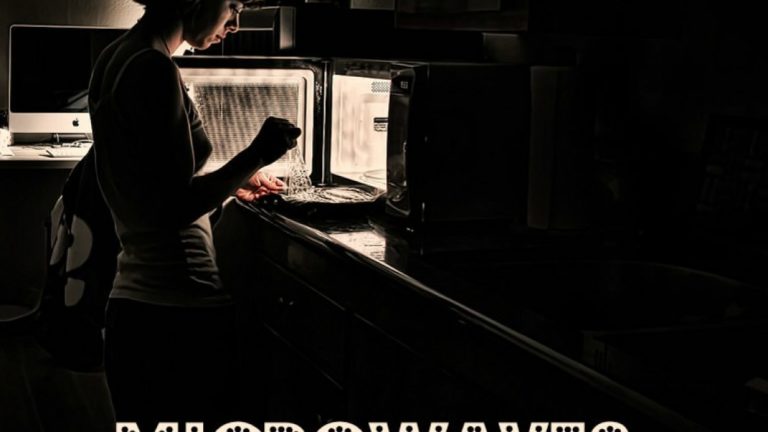How Safe Is Your Microwave?

Over 90% of American homes have a microwave oven. That fact doesn’t seem so surprising, given that there probably aren’t a lot of people you can name that don’t own or use a microwave. In our convenience-driven, quick results-focused society, microwaves make preparing meals a snap. Just open the box of Hot Pockets, insert one for a few minutes and enjoy!
As is fairly obvious, just because something is quick and easy doesn’t mean it’s the best option. Although microwaves have been around for decades now, there are some parties that maintain that microwaves are sacrificing household health for the quick cook time. Could this be true?
Let’s take a closer look at exactly what microwaves do. These ovens emit their namesake, microwaves: high frequency radio waves (radiofrequency fields) and, like visible radiation (light), they are part of the electromagnetic spectrum. Microwaves aren’t only used to zap your dinner; they’re used primarily for TV broadcasting, radar for air and sea navigational aids, telecommunications including mobile phones, and in industry for processing materials. These waves are reflected, transmitted or absorbed by materials in their path, much like light. As you may have discovered when you accidentally left a fork in the microwave, metallic materials totally reflect microwaves (causing those crazy sparks), while non-metallic materials such as glass and some plastics are mostly transparent to microwaves. You can heat up frozen items or foods containing water because they readily absorb microwave energy, which is then converted into heat.
This quick breakdown doesn’t tell us too much one way or the other, so let’s look at what both sides have to say about the issue.
All in Favor
In general, government organizations and research, as well as mainstream news outlets, support the safety of the use of microwaves. They declare that the threats of microwave dangers are just internet-circulated misconceptions that can easily be dispelled.
For example, Eating Well Magazine lists the threat of microwave radiation as a “bustable” myth. They cite Robert Brackett, Ph.D., director of the National Center for Food Safety and Technology at the Illinois Institute of Technology, who says, “‘Radiation’ might connote images of nuclear plants, but it simply refers to energy that travels in waves and spreads out as it goes. Microwaves, radio waves and the energy waves that we perceive as visual light all are forms of radiation. So, too, are X-rays and gamma rays—which do pose health concerns. But the microwaves used to cook foods are many, many times weaker than X-rays and gamma rays. And the types of changes that occur in microwaved food as it cooks are from heat generated inside the food, not the microwaves themselves. Microwave cooking is really no different from any other cooking method that applies heat to food.”
This is a common, logical argument that the defenders of microwaves make: because of the low power of the machine, its effect is really no different than cooking on the stove or in the oven. It may not necessarily “kill” the nutrients that the food holds, as is another worry point for the anti-microwave side.
Many expert argue exactly this, such as registered dietician and certified food scientist Catherine Adams Hutt. “Whenever you cook food, you’ll have some loss of nutrients,” she says on a CNN Health article. “The best cooking method for retaining nutrients is one that cooks quickly, exposes food to heat for the smallest amount of time and uses only a minimal amount of liquid.”
Carol Byrd-Bredbenner, Ph.D., R.D., professor of nutrition at Rutgers University in New Brunswick, New Jersey (cited in the Eating Well magazine article), says, “[Microwaves zapping nutrients] is misguided thinking. It’s the heat and the amount of time you’re cooking that affect nutrient losses, not the cooking method. The longer and hotter you cook a food, the more you’ll lose certain heat- and water-sensitive nutrients, especially vitamin C and thiamin [a B vitamin].” In fact, proponents of the microwave say that because microwave cooking often cooks foods more quickly, it can actually help to minimize nutrient losses, as the food is exposed to heat for shorter periods of time.
In fact, the exposure to the microwaves themselves is held to be very minimal by microwave makers. Unlike conventional ovens, microwaves are absorbed only in the food and not in the surrounding oven cavity. Also importantly, microwave manufacturers maintain that the energy doesn’t remain in the cavity or the food after the microwave oven is switched off. In this respect, microwaves act just like light; when the light bulb is turned off, no light remains. Therefore, by all means, actually using the microwave should be very safe, according to these arguments and more held by Team Microwave.
Those Opposed
Team Anti-Microwave paints a very different picture in the verbiage used to describe the microwave process, and they also make very good points in getting to what happens at the molecular level. Safe Space Protection writes, “In a microwave oven, alternating current forces atoms reverse polarity at a startlingly high rate. This creates such violent friction that the water inside the food molecules begin to vibrate and heat up. Unfortunately, this action also deforms, impairs and tears molecules apart.” In other words, the food that enters the microwave just doesn’t come out the same, and may be completely ruined through the process.
It stands to reason, then, that you wouldn’t want microwaves affecting your body, either. Team Anti-Microwave points out that certain body parts might be more vulnerable than others, such as eyes, for instance. Unlike other areas of the body, eyes lack the blood vessels to dissipate the heat and cellular stress. Cases of microwave-related cataracts have been reported as early as 1950’s, and are thought to be still continuing today in cases of workers exposed to this type of radiation.
Beyond the microwaves themselves lies another concern that Safe Space addresses: the risk of exposure to harmful levels of EMFs, “because all appliances working on electricity produce a toxic electromagnetic field that’s on 24/7 running the clock and more. This magnetic field can penetrate the body…Magnetic fields are the part of electromagnetic fields (EMFs) that penetrate concrete, steel and human bodies. Unfortunately, they can have serious health implications.”
Dr. Joseph Mercola, an acclaimed natural medicine practitioner and loud opponent of the microwave, details the story of widely-held anti-microwave champion, Swiss scientist Hans Hertel. He was the first to study microwave dangers and investigated specifically how cooking degrades and depletes food of nutrients, which, in his research, showed up in study participants’ blood. After feeding eight participants microwaved and non-microwaved food, significant changes were found in the blood samples from the intervals following the foods cooked in the microwave oven, including a decrease in all hemoglobin and cholesterol values, especially the ratio of HDL (good cholesterol) and LDL (bad cholesterol) values. Lymphocytes (white blood cells) showed a more distinct short-term decrease following the intake of microwaved food than after the intake of all the other variants. Of course, this is one of the few studies done on this research in this manner, but its findings are indeed thought-provoking. Dr. Mercola highlights the fact that each of these indicators point to degeneration, and the fact that the microwaved food might pass along toxic agents to consumers (“When the microwave radiation destroys and deforms food molecules, new harmful compounds form, radiolytic compounds. These dangerous compounds harm the body in many ways”).
A prime example of this may come from the Health-Science website, “In 1991, there was a lawsuit in Oklahoma concerning the hospital use of a microwave oven to warm blood needed in a transfusion. The case involved a hip surgery patient, Norma Levitt, who died from a simple blood transfusion. It seems the nurse had warmed the blood in a microwave oven. This tragedy makes it very apparent that there’s much more to “heating” with microwaves than we’ve been led to believe. Blood for transfusions is routinely warmed, but not in microwave ovens. In the case of Mrs. Levitt, the microwaving altered the blood and it killed her.
“It’s very obvious that this form of microwave radiation ‘heating’ does something to the substances it heats. It’s also becoming quite apparent that people who process food in a microwave oven are also ingesting these ‘unknowns’.”
What Now?
The last paragraph really sums it all up. Unfortunately, there are still many “unknowns” that require a lot of researching, on both sides. There are too few scientifically-conclusive or sparsely-researched studies that could turn the tide one way or another. Therefore, it’s really up to each household whether or not they want to continue using their microwaves based on the evidence thus far.
If you’ve decided not to chuck out your microwave, here are the things you’ll need to do to help keep you and your household safe:
Check your microwave regularly:
According to the World Health Organization, microwaves as they are designed should be perfectly safe and have minimal leakage. However, if your microwave is damaged, dirty or modified, the risk does in fact increase. WHO writes, “It is therefore important that the oven is maintained in good condition. Users should check that the door closes properly and that the safety interlock devices, fitted to the door to prevent microwaves from being generated while it is open, work correctly. The door seals should be kept clean and there should be no visible signs of damage to the seals or the outer casing of the oven. If any faults are found or parts of the oven are damaged, it should not be used until it has been repaired by an appropriately qualified service engineer.” Take a look at your microwave at least annually.
Steam more often:
Whether or not microwaves are proven safe, steaming is still a safe option for heating up your foods, as it is an effective way that doesn’t destroy key nutrients. One small study found that steamed broccoli retained more of its cancer-fighting sulforaphane than microwaved broccoli.
Never microwave an empty oven:
Microwaving tin foil is an obvious no-no, but microwaving an empty oven can be just as bad. Without food to absorb the microwaves, the microwave energy can reflect back into the magnetron and may damage it, thus letting it leak.
The Chronovisor: The Vatican’s Mysterious Time Travel Device

While many regard H.G. Wells as a genius for inventing the idea of the time machine in his novel, “The Time Machine,” some believe he was revealing a top-secret capability. Since his novel was first published in 1895, thousands of books, articles, and videos have followed, documenting curious accounts of time travel and dimensions beyond the wildest of imaginations.
One of these works, Father François Brune’s 2002 book, “Le Nouveau Mystere du Vatican,” brings a forgotten time-travel device called the Chronovisor, back into the public eye — or at least into the minds of conspiracy theorists.
Brune, who learned of the device in the early 1960s, swears the Chronovisor exists. A day after he met scientist-priest Father Pellegrino Ernetti for the first time, the two were sailing along the Grand Canal of Venice discussing biblical interpretations, when Ernetti explained that theories and interpretations were unnecessary when one could see the truth for himself. He explained to Brune how the Chronovisor functioned, allowing the viewer to see and hear past and future events. The story of his full account is included in Brune’s book.
With a little digging, researchers will find the first mentions of the Chronovisor in a 1972 article published in the Italian magazine “La Domenica del Corriere,” entitled, “A machine that photographs the past has finally been invented.”
What is the Chronovisor and Who Allegedly Created It?
Belonging to the Vatican, the Chronovisor time machine is heralded as one of the papacy’s best-kept secrets. The device is said to be replete with three precious alloys, cathodes, dials, and levers, and it can display myriad historical events in biblical and Roman history. Acting as a sort of television, the Chronovisor has even supposedly verified the existence of Jesus Christ and broadcast his crucifixion.
The Chronovisor time machine is claimed to have been invented in the 1950s by a dedicated and secret team of Italian scientists, including physicists Enrico Fermi and Pellegrino Ernetti. Critics may take credibility issues with the fact that Ernetti, a Benedictine monk, eventually became a Catholic priest and a working exorcist.

However, Enrico Fermi’s reputation is nothing to scoff at. He was awarded the Nobel Prize for Physics in 1938 “for his demonstrations of the existence of new radioactive elements produced by neutron irradiation and for his related discovery of nuclear reactions brought about by slow neutrons.”



































